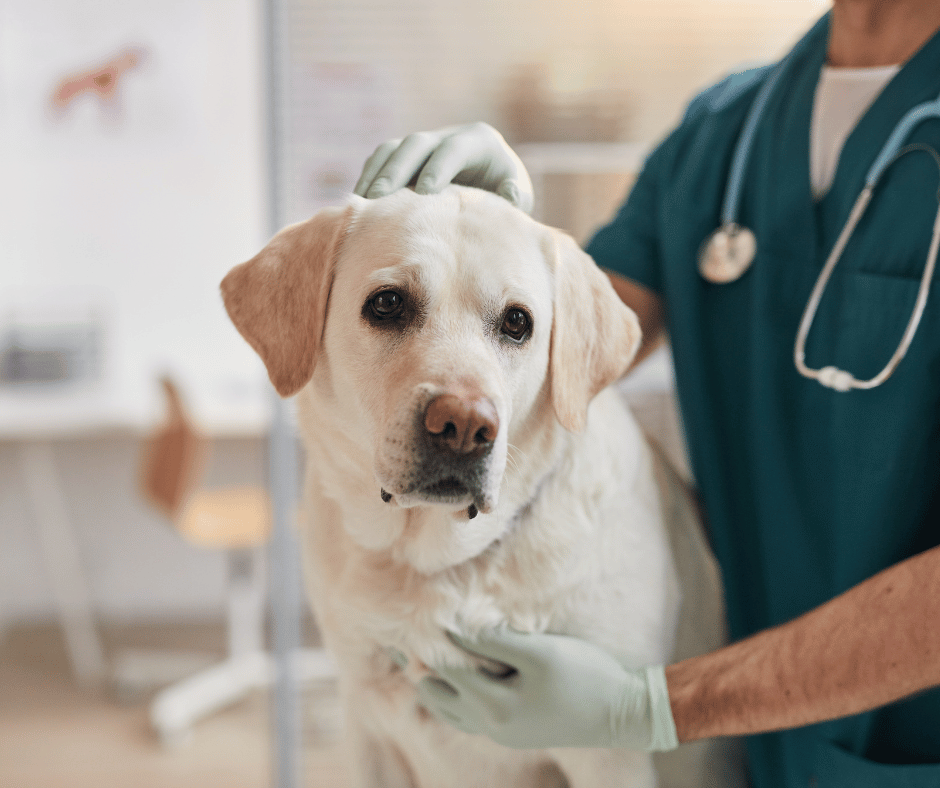What are adrenal medullary tumors? Are they common?
 Adrenal medullary tumors are neoplasms (abnormal growths of cells) that form around the dog’s medullary gland. Unlike adrenocortical tumors that form in the cortex of the adrenal gland, these tumors are always cancerous. There are two types of adrenal medullary tumors:
Adrenal medullary tumors are neoplasms (abnormal growths of cells) that form around the dog’s medullary gland. Unlike adrenocortical tumors that form in the cortex of the adrenal gland, these tumors are always cancerous. There are two types of adrenal medullary tumors:
- Neuroblastoma: A cancerous tumor that originates in early nerve cells called neuroblasts and only occurs in young dogs as their endocrine system develops.
- Pheochromocytoma: The most common adrenal medullary tumor in dogs, pheochromocytoma occurs on the adrenal medulla and is most often a benign tumor that only needs treatment if it induces high blood pressure, rapid heartbeat, and a higher than normal internal temperature.
Adrenal medullary tumors are exceedingly rare, only accounting for 0.1% (1 in 1,000) to 0.01% (1 in 10,000) of canine neoplasms.
Canine Pheochromocytoma
The most common medullary lesion is pheochromocytoma, originating in the chromaffin cells (neuroendocrine cells) that secrete catecholamines (hormones released by the adrenal glands in response to stress) comprising norepinephrine (stress hormone) and epinephrine (stress hormone).
A majority of the canine pheochromocytomas are malignant mostly affecting the adjacent vasculature (arrangement and distribution of blood vessels). However, metastasis is less common accounting for a mere 20-30%. The most common metastatic sites include the liver, spleen, and lungs while the less common sites include regional lymph nodes, kidneys, bone, pancreas, peritoneum, brain, spinal cord, and heart.
Bilateral adrenal gland involvement has been reported in 5% of dogs. Other types of adrenal medullary tumors reported generally include concurrent adrenal medullary tumors and adrenocortical tumors. The median age of affliction with adrenal medullary tumors is 11 years.
What are the symptoms and clinical signs of adrenal medullary tumors?
The symptoms and clinical signs of pheochromocytoma are non-descript in that they can be indicative of other health problems. Regardless if it’s a medullary tumor or not, if you see any of these symptoms, take your dog to the vet for a clinical diagnosis.
The clinical signs may include weight loss, anorexia, panting, tachypnea (rapid breathing), tachycardia (heart rate that exceeds the normal range), lethargy, hypertension, and collapse accompanied by paroxysmal (sudden outburst of emotion or action), denoting occasional catecholamine release by the lesion.
Other symptoms like abdominal distension, abdominal pain, ascites (accumulation of fluid in the peritoneal cavity), peripheral limb edema (swelling of tissues in the lower limbs due to accumulation of fluid), acute intraabdominal or retroperitoneal hemorrhage (hemorrhage into the retroperitoneal space into from the kidney) have also been noted.
How do veterinarians diagnose pheochromocytoma in dogs?
There are several diagnostic techniques that veterinarians use to diagnose adrenal medullary tumors. Because these tumors impact the endocrine system that regulates your dog’s hormones and metabolic function, it’s a complex diagnosis that requires myriad testing. Common diagnostic techniques like complete blood chemistry, chemistry panel, and urinalysis generally do not give any direction. Instead, doctors resort to other testing methodologies like:
- Thoracic radiographs: a form of chest radiography (a form of xrays) that shows abnormal veins that could signify pheochromocytoma
- Abdominal ultrasound scans: Abdominal ultrasounds are useful in detecting adrenal mass because in some cases pheochromocytoma is confirmed only after the detection of an adrenal mass.
- Ultrasonography: Ultrasonography helps in identifying intravascular invasion.
- CT scans: Used to identify abnormal growths around the adrenal glands
- MRI scans: Like CT scans, used to identify growths around the adrenal glands
It should be noted that thoracic radiographs can be particularly useful because they can identify three different types of abnormalities that signify an endocrine system issue. They provide insight into tumor thrombus that could be a result of cardiomegaly (a medical condition in which the heart is enlarged) secondary to concentric hypertrophy (growth of an organ without proper enlargement), or distension of the caudal vena cava (posterior end of the body).
This is because the pheochromocytoma can impact how your dog regulates blood pressure and therefore how hard their heart has to work to circulate blood. There are reports of pulmonary metastasis in 5- 10% of cases.
What are the treatments for pheochromocytoma?
 Surgery is the most common and recommended treatment for dogs with pheochromocytoma. Some common side effects of anesthesia may include hypertension, tachycardia, and arrhythmias. Dogs receive phenoxybenzamine (blood pressure medication), 1-2 weeks prior to surgery.
Surgery is the most common and recommended treatment for dogs with pheochromocytoma. Some common side effects of anesthesia may include hypertension, tachycardia, and arrhythmias. Dogs receive phenoxybenzamine (blood pressure medication), 1-2 weeks prior to surgery.
If the dog is tachycardic, beta-blockers (a class of medicines used to treat arrhythmias in dogs) like propranolol or atenolol may be given. If the tumor is found too extensive doctors resort to debulking, including removal of tumor thrombi from the vena cava. This helps in controlling the clinical signs by reducing catecholamine levels.
However, chemotherapy and radiation therapy still remain under the scope of veterinary research. Around 50% of dogs with adrenal medullary tumors develop concurrent tumors originating from endocrine glands like the pituitary, adrenal cortex, thyroid gland, parathyroid gland, and pancreatic beta cells.
What are the prognosis and survival rate of pheochromocytoma treatments?
The survival rate of dogs with pheochromocytoma largely depends on how early it’s caught and how the dog’s body reacts to the perioperative period (weeks leading up to surgery). In cases of metastatic disease, where the cancer is spreading, the prognosis is unfortunately poor as the dog may not make it to surgery or is no longer a feasible option. For dogs that get diagnosed early enough and survive the surgery, the chances of years of extra life and long-term survival are good.
Thank you for utilizing our Canine Cancer Library. Please help us keep this ever-evolving resource as current and informative as possible with a donation.
Reference
Withrow and MacEwen’s Small Animal Clinical Oncology – Stephen J. Withrow, DVM, DACVIM (Oncology), Director, Animal Cancer Center Stuart Chair In Oncology, University Distinguished Professor, Colorado State University Fort Collins, Colorado; David M. Vail, DVM, DACVIM (Oncology), Professor of Oncology, Director of Clinical Research, School of Veterinary Medicine University of Wisconsin-Madison Madison, Wisconsin
Other Articles of Interest:
Blog: How To Help Pay For Your Dog Cancer Treatment Cost: 7 Fundraising Ideas
Blog: What Are Good Tumor Margins in Dogs and Why Are They Important?
Blog: Dispelling the Myths and Misconceptions About Canine Cancer Treatment
Blog: Financial Support for Your Dog’s Fight to Beat Cancer
Blog: Cancer Does Not Necessarily Mean A Death Sentence
Blog: What To Do When Your Dog Is Facing A Cancer Diagnosis – Information Overload
Blog: Dog Cancer Warning Signs: Help! I Found a Lump on My Dog



Recent Comments